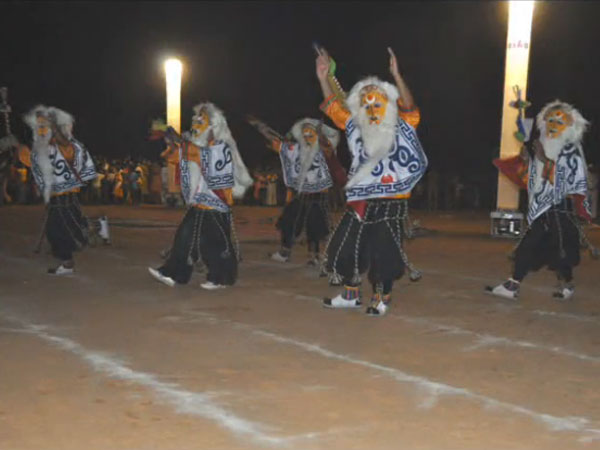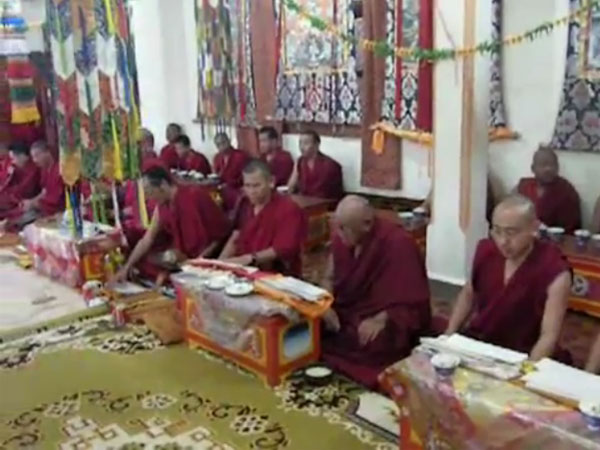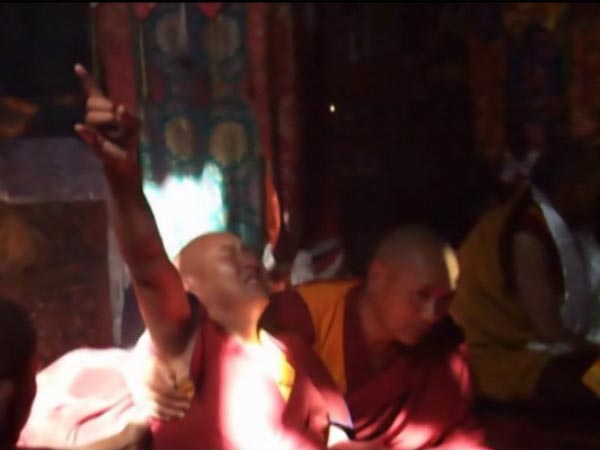DHARMA READINGS
| DHARMA PROTECTORS WITHIN THE GELUG TRADITION | | Print | |
 When I first began to practice, I didn’t get much exposure to Dharma protectors. As my practice continued, specifically within the Tibetan tradition, I started to see them everywhere. Within texts like Mind Training: The Great Collection (Library of Tibetan Classics), petitioning Dharma protectors play an important role. And if one reads Brilliant Moon: The Autobiography of Dilgo Khyentse, who was a great Nyingmapa practitioner, one can see how heavily they rely on Dharma protector practice and their importance. Readers' Comments
Origins of Dharma Protectors There are generally two types of Dharma protectors, mundane and supramundane. As is often cited in tradition, when Tibet first received transmissions of the Dharma, there was much resistance. There was a lot of shamanism, animal sacrifice and spirit worship before Buddhism began to enter Tibet. When Buddhism started to grow in Tibet, there was great resistance from the spirits because Buddhism’s appearance meant that the worldly spirits would have to leave or that people would stop worshiping them. As a result, a type of spiritual war ensued between the great yogi Padmasambhava, also known as Guru Rinpoche, who was to subdue these spirits so the Dharma could spread. I remember a funny video with Tsem Tulku Rinpoche, where he states that the spirits fighting back against Padmasambhava was like an old lady fighting Mike Tyson. Through his compassion, Padmasambhava or Guru Rinpoche subdued the spirits and then bound them by oath to protect the Dharma. Categories of Dharma Protectors Many of the mundane Dharma protectors are these spirits that were subdued and sworn to protect the Dharma, its doctrine and practitioners. People can make offerings to them, requesting help or assistance, in the same way that you could pay an attorney or someone else for help, but one doesn’t take refuge in them because they’re not enlightened. Personally I don’t petition mundane protectors because I really don’t want to confuse my practice. Supramundane protectors are emanations of bodhisattvas or are actually enlightened beings. The point of petitioning them is to protect oneself in practice until bodhichitta is generated. If someone needs things like resources, health, and other influences while practicing the path to enlightenment, then those things can be made available through protectors.  The main thing is that someone has to have pure samaya or a pure relationship with their teacher and to actually practice pure morality. Without practicing pure morality and having a clean relationship with one’s teacher, petitioning a supramundane protector is more or less pointless because nothing will happen. Some people slavishly petition protectors day and night without having kept pure vows and precepts, and nothing happens. I think it would be better time spent to practice actual Dharma instead. How Does it All Work? There’s one explanation that Tsem Tulku once gave that has stuck in my head and that I really like. He says that when one is petitioning a protector, one is actually doing the 7 Limb Prayer and generating bodhichitta. Based on that merit generated, obstacles are removed. If you’re on a busy street, it’s like someone pulling you safely back onto the sidewalk. However, just because you’re safe today doesn’t mean you’re safe tomorrow. Is Dharma Protector Practice Cultural? Many people think Dharma protectors are a Tibetan cultural thing, but that actually isn’t true. Dharma protector practice originated in India. And some Dharma protectors were pledged to the Dharma during the time of Buddha Kassapa, the 3rd Buddha of the fortunate eon. Buddha Kassapa is also the Buddha previous to Shakyamuni Buddha, who is historically known to most people as “The Buddha.” I’ve also been to a Vietnamese monastery and seen Dharma protectors. So I mention this to dispel ideas that only the “crazy Tibetans” do Dharma protector practice. Why Are Dharma Protectors Always so Angry? As most people notice, Dharma protectors usually look angry or wrathful. The explanation that I liked for this is because they’re angry at our afflictive emotions like anger, attachment, jealousy, ignorance etc that causes so much harm to ourselves and others. When peaceful methods no longer subdue the mindstream, sometimes a wrathful appearance is used. An example is if you have a kid and he keeps wildly misbehaving, you might start to worry that he might grow up to be a criminal if he doesn’t change. As a method, you might be very stern with him to get the message across. On the outside you can look fierce, but on the inside the motivation is compassion. Dharma Protectors of the Lamrim Within the Lamrim tradition, there are three scopes of practice. The initial scope practitioner is someone who practices for a better future life. A middle scope practitioner practices for individual liberation. A great scope practitioner practices to attain enlightenment in order to lead other beings to liberation and happiness. The great scope is not independent of the small and medium scope, the small scope sets the foundation for the medium scope, and the small and medium scope set the foundation for the great scope. So everything is interconnected and interdependent; a great scope practitioner must practice everything and not skip the previous scopes. There are specific Dharma protectors whose role it is to protect the doctrine of the Lamrim or the different scopes. Here’s an article from His Holiness the Dalai Lama and the role of Dharma protectors within the Gelug tradition. According to His Holiness, the protectors of the Lamrim are the only protectors one needs, if one practices them at all. The Dharma protectors of the Lamrim or stages of the path tradition are supramundane protectors. Kalarupa, Dharma Protector of the Small Scope of the Lamrim  Kalarupa, Dharma Protector of the Small Scope of the Lamrim. He’s also an emanation of Manjushri, Buddha of wisdom. Vaishravana, Dharma Protector of the Medium Scope of the Lamrim Vaishravana is also known as Dzambhala, a wealth deity. While most people associate wealth with material wealth, wealth here refers more to spiritual wealth. He is the Dharma protector of the middle scope of the Lamrim, and is associated with ethics. 6 Armed Mahakala, Dharma Protector of the Great Scope of the Lamrim 6 Armed Mahakala is an emanation of Avolakiteshvara, Buddha of compassion. He’s the Dharma protector of the large scope of the Lamrim. Since 6 Armed Mahakala is an emanation of Chenrezig, there’s a special emphasis on compassion, helping the practitioner to generate the great compassion needed for the great scope. Vajrapani, Protector of the Secret Tantras Vajrapani represents the pure power and energy of enlightened mind, and is an emanation of Akshobya. He is also known as the “Lord of Secrets”, and he protects the secret Tantra. He is also known to be the last of the 1000 Buddhas who will manifest in this fortunate eon. Buddha Shakyamuni, the historical Buddha, was the 4th. Dharma Protectors and My Own Practice For my own personal practice, I find that relying on Dharma protectors has helped me with my meditations on the stages of the path or Lamrim, working alongside the practice of ngondro to help accumulate merit and purify karma to support my meditations. These help me with general interferences that often happen when practicing and keep me consistent.
|
OTHER DHARMA READINGS
- A GUIDE TO SPIRITUAL PRACTICE
- DHARMA DEMYSTIFIED: NAGARJUNA, THE FOUNDER OF THE MAHAYANA TRADITION
- DORJE SHUGDEN ON BLACK HORSE
- WHY MANJUSHRI MATTERS
- DHARMA DEMYSTIFIED: THE ENTHRONEMENT OF DORJE SHUGDEN









